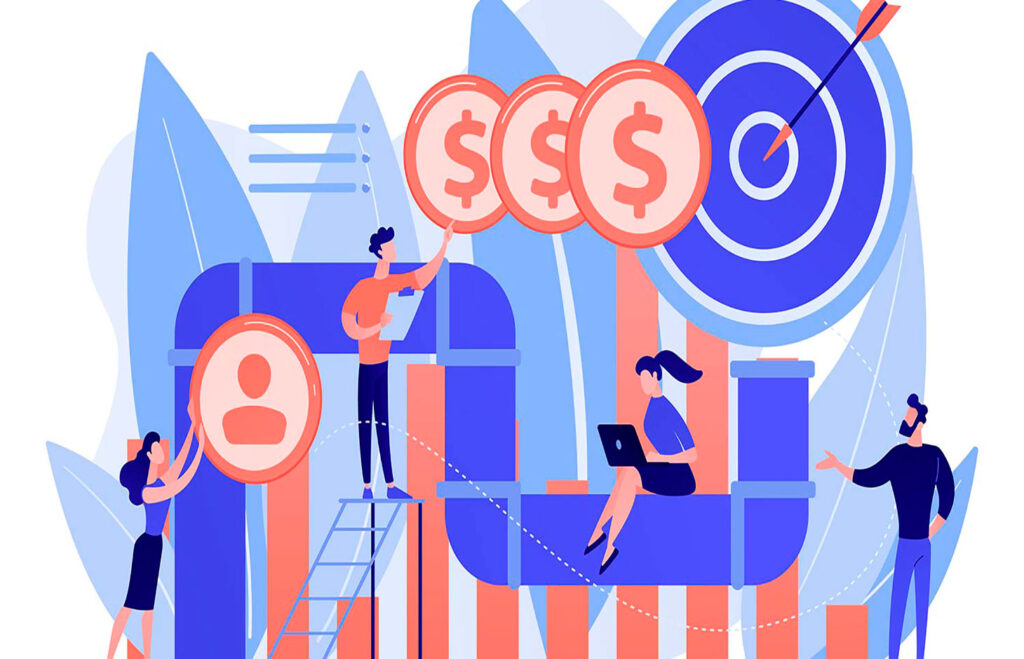In a world slowly reawakening from the haze of a pandemic that saw belts tighten and life slow to a crawl, many businesses are feeling an innate draw to anything that can help them boost revenue quickly.
Enter: the bottom-up approach to software sales, which connects customers with products quickly and at a low cost to the business.
For some subscription businesses, de-emphasizing the role of the sales representatives can boost scalability and improve profit margins. Understanding the bottom-up sales strategy and how it compares to the more traditional top-down subscription business model can help determine if you should join the growing number of SaaS businesses that have reconfigured the way they bring their product to potential customers.
What’s the difference between bottom-up and top-down sales for the subscription business model?
There are two sales approaches for software being sold with the subscription-based business model.
Traditionally, SaaS and other B2B subscription businesses have used the sales-dominated top-down method of finding new customers. This approach has, at least historically, been viewed as the best way to secure large, company-wide contracts. In fact, there’s data that supports this conclusion: over 65% of B2B buyers say they derive value from discussing things over with a sales representative before making a purchasing decision.
Statistics, however, cut both ways. A different survey shows 60% of buyers prefer not to speak to sales. Another 62% feel they can learn everything they need to know about a product through online research.
Add to these facts that the average SaaS business spent 18% of its annual recurring revenue on sales last year—down 10% from the year before—and a new story begins to emerge: effective as sales-driven subscription business models may have been in the past, there’s no denying they add to the cost of acquisition which consequently decreases the customer lifetime value (LTV).
Instead, the bottom-up subscription model de-emphasizes the role of sales. Instead of having a dedicated team that finds and nurtures leads, hosts product demos, and eventually negotiates a contract, you have a much simpler dynamic:
- The product is discovered by a customer who intends to use it.
- The customer then purchases the product and spreads it throughout their place of work.
Zoom is just one example of a successful subscription business that uses this subscription business model.
A product like Zoom requires no salesperson because it’s easy to use, quick to set up, and, once implemented, it effectively sells itself: when one person within a company begins scheduling Zoom meetings, their coworkers must adopt the tool as well so they can participate in business communications.
What are the pros & cons of a bottom-up sales model?
The bottom-up subscription business model, like any business strategy, comes with its own host of advantages and shortcomings.
Pros
- Cost-effective: Having a large sales team quickly becomes financially cumbersome. While the expense might be justified in certain cases, not all sales drive enough monthly recurring revenue to warrant such large upfront investments. Some experts have suggested customer contracts with an LTV of less than $10,000 are best handled through self-service channels to ensure that you more easily recuperate the customer acquisition costs (CAC).
- Predictable growth: Bottom-up sales for the subscription business models also benefit from an enhanced degree of stability. This owes largely to the fact your CAC becomes constant and predictable. Without the variables that come up during the sales process (discounts, prolonged negotiations, etc.), it’s easier to get a clear idea of how much revenue each sale actually generates. This clarity makes it easier to strategize and manage funds at the executive level.
- Quicker return on investment (ROI): On average, it takes an entire year to recuperate the CAC for each account. Because bottom-up-driven businesses see a quicker ROI, they have more money to pour back into product development. This is particularly advantageous in a business’s early years as it struggles with competition and scalability.
Cons
- Inflexibility: While sales teams may be able to land contracts by making creative offers, discounts, etc. none of this flexibility is available with a bottom-up approach. Potential customers find the product through your marketing channels and decide independently if it’s right for them.
- Smaller sales: Customers who are about to spend a significant amount of money on a product typically insist on a certain level of communication with the company they’re about to do business with. Enterprise-level clients may expect custom packages, onsite onboarding, and other things that simply aren’t possible with a bottom-up business model.
- No focus on customer retention: The bottom-up subscription models may leave customers without an account executive or designated customer success representative. This means you won’t have anyone to ensure customers stay happy with your product and their predictable revenue remains with your business.
How do bottom-up businesses outperform their top-down peers?
Naturally, a particular business model alone cannot ensure a subscription business will outperform its competitors. However, the bottom-up model does dependably provide its users with the ever-valuable asset of capital efficiency.
Top-down sales can be both expensive and slow-moving. Because it takes so long to recuperate investments, scalability can be difficult and growth can happen very slowly.
Assume two businesses operating in the same niche experience an identical sales year. The only difference between these two businesses is that one uses the top-down model, while the other is bottom-up.
All other things being equal, the bottom-up business may achieve profitability quicker for the simple reason it has less money tied up in acquisition costs.
This extra money can then be channeled into other resources that might help a business outperform its competitors: product development, marketing, customer service, etc.—all advantageous assets that can flow directly from a strategy that prioritizes fast revenue gains.
Are there any instances where the bottom-up business model doesn’t make sense?
To find success using a bottom-up subscription business model, the product itself must be simple enough to be understood and implemented by the customer without the support of your team. If the product is difficult to understand or if it requires a significant amount of onboarding, the top-down approach providing support from sales and/or customer success may be better.
Keep in mind enterprise-level contracts often take 6-18 months to secure. During that time there is usually significant back and forth between the client and the software provider that can’t readily be replicated by the bottom-up model. To that end, a hybrid strategy that implements bottom-up acquisition for smaller accounts, and a more traditional sales-driven approach for larger ones might be justified.
The bottom-up sales model also tends to better favor products that have a very broad potential user base. Because niche products typically have a relatively small customer base, the sales process is often more competitive, and having a designated team can make a significant difference.
The right tools make it possible
Self-serviced sales are only possible with the right technology. Recurring billing software offering hosted pages can help simplify your bottom-up sales strategy. Registration pages make it possible to close deals at all hours of the day without requiring customers to contact sales. Meanwhile, self-service portals enable existing customers to update details and even adjust their subscriptions independently, in a matter of minutes.
It’s true that this sales strategy will not suit the needs of every SaaS business. However, for the subscription businesses that value capital efficiency, a bottom-up business model may be the best way to get the most out of every sale.








